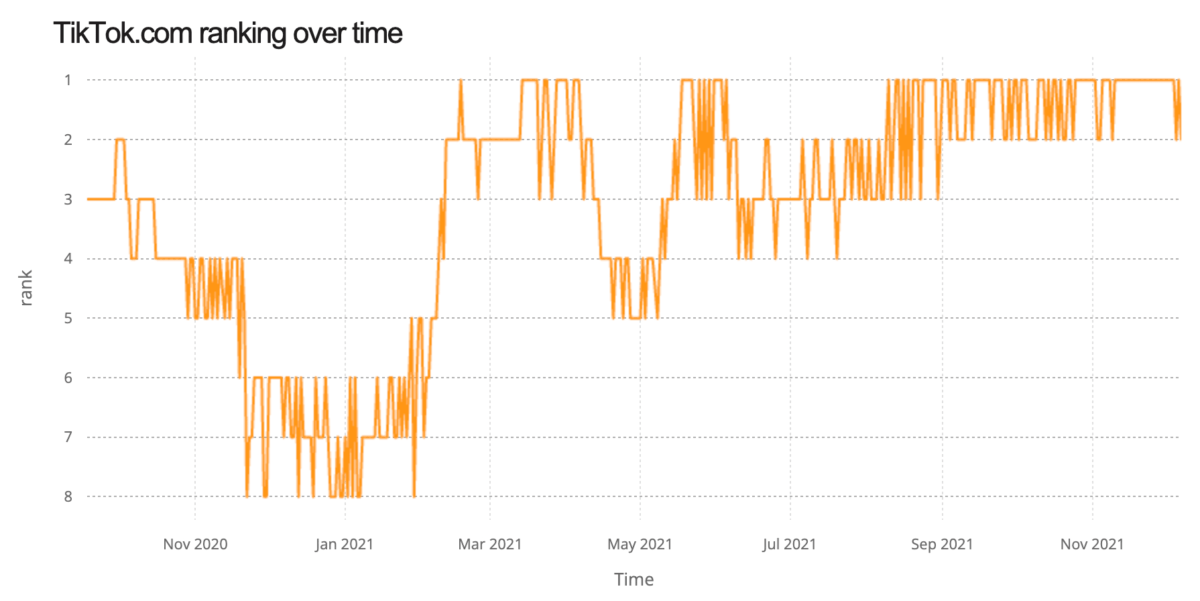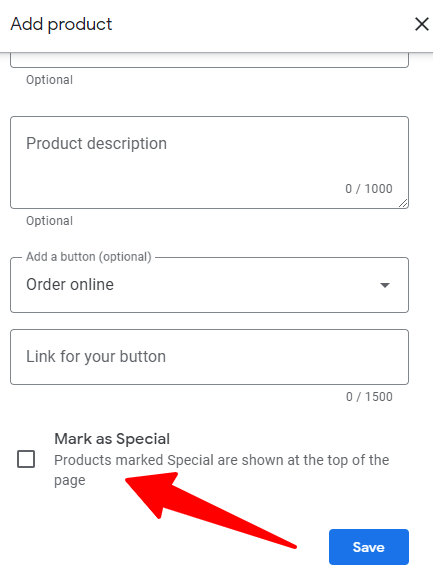The TikTok Search Revolution: How Gen Z is Transforming Online Discovery
The Local Memo: TikTok Beats Google as Most Popular Domain of 2021
In this week’s update, learn about TikTok’s achievement as the most popular domain of 2021; Google’s new “Mark as Special” feature for products; a compendium of local search stats; how to diagnose a drop in local ranking; Facebook’s imminent ad targeting changes; and the continued growth of food delivery apps.
TikTok Beats Google as Most Popular Domain of 2021
For the first time, the annual CloudFlare report for 2021 has placed TikTok.com at the top of internet domains by popularity. This achievement represents massive growth for TikTok, which placed seventh in domain popularity in 2020, with Google taking the top position. TikTok unseated Google several times during the course of 2021, maintaining first position consistently from September through December and pushing Google to second place. Facebook took third place for the year, followed by Microsoft (which includes Office365 and Teams), Apple, and Amazon, in that order.

Courtesy CloudFlare
Google Adds “Mark as Special” to Product Listings
Google has added a “Mark as Special” checkbox to product listings in Google Business Profiles. Checking the box causes the selected items to appear at the top of the profile’s list of products for sale. Users can select multiple products as “special,” causing all selected products to appear before any others. According to Shameem Adhikarath, posting on Twitter, selected products show up more prominently in initial Google search results on both desktop and mobile, but products are shown in a random order when you click through to view all.

Courtesy Search Engine Land
A Compendium of Local Search Stats
Miriam Ellis offers a big compendium of local search stats in a new post on the Moz blog, with the intent of sharing findings that will help local SEOs explain the importance of their work. Stats come from numerous sources and are broken down into several headings, including the overall significance of local search, stats on winning tactics in local, and facts about the state of local SEO as an industry. Here are just a few of stats I found particularly interesting, as I haven’t seen them mentioned much elsewhere:
- Live chat usage increased 85% during the pandemic.
- 78% of consumers would prefer to interact with local businesses via text.
- The biggest factor influencing conversions from Google is the business’s average rating.
- Google hides website links in 59% of local packs, presumably as a means of promoting zero-click search.
- Calls to businesses via Google Business Profiles increased 61% in the first half of 2020.
How to Diagnose a Drop in Local Rankings
Phil Rozek has 10 suggestions for things to check first if you experience a sudden, significant drop in the rankings of your Google profile or local website. His suggestions include using Search Console to detect patterns in ranking changes to your website pages; analyzing any recent ranking changes from competitors, whether legitimate or spam-fueled; checking for any inadvertent removals or changes of content on your site; and comparing the performance of various locations if you have a multi-location business. Rozek has many other recommendations and more detail behind each of the ones I’ve mentioned, so the full post is worth checking out.
Meta Prepares to Roll Out Ad Targeting Changes
As we’ve covered previously, Facebook parent Meta is getting ready to roll out changes that will make ad targeting less specific to certain demographic characteristics of audiences considered to be especially sensitive, including health-related topics, sexual orientation, religious practices, and political beliefs. The changes impact new campaigns starting on January 19; already-running campaigns impacted by the changes will be allowed to continue until March.
It’s unknown as yet whether other social media platforms will adjust their targeting capabilities in light of the changes from Meta, which has been under especially intense scrutiny. Meta also hasn’t indicated whether these changes will be followed by others.
Food Delivery Apps Had a Great Year in 2021
Subscribe to Local Memo!
Signup to receive Local memo updates and the latest on localized marketing, delivered weekly to your inbox.




